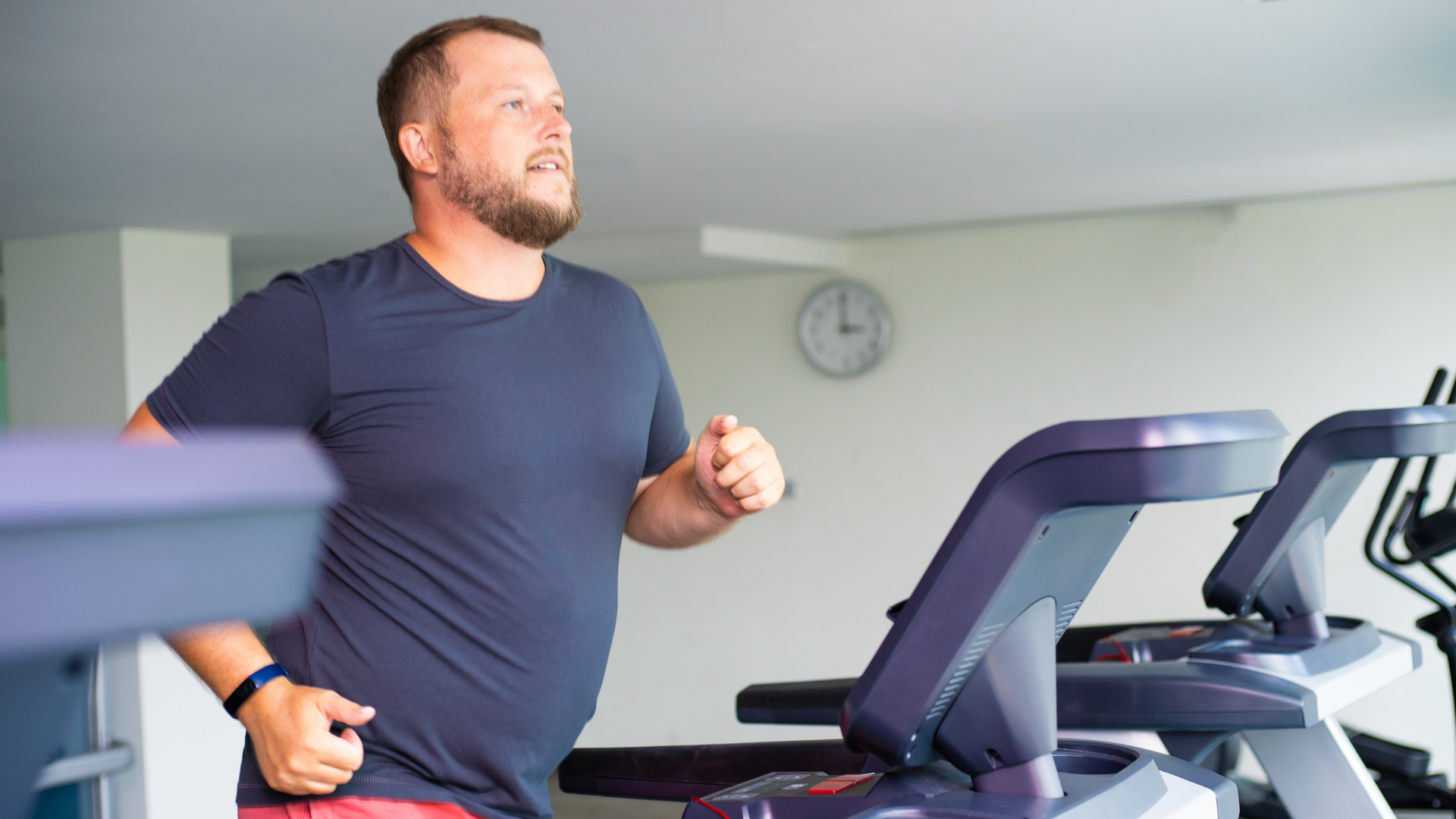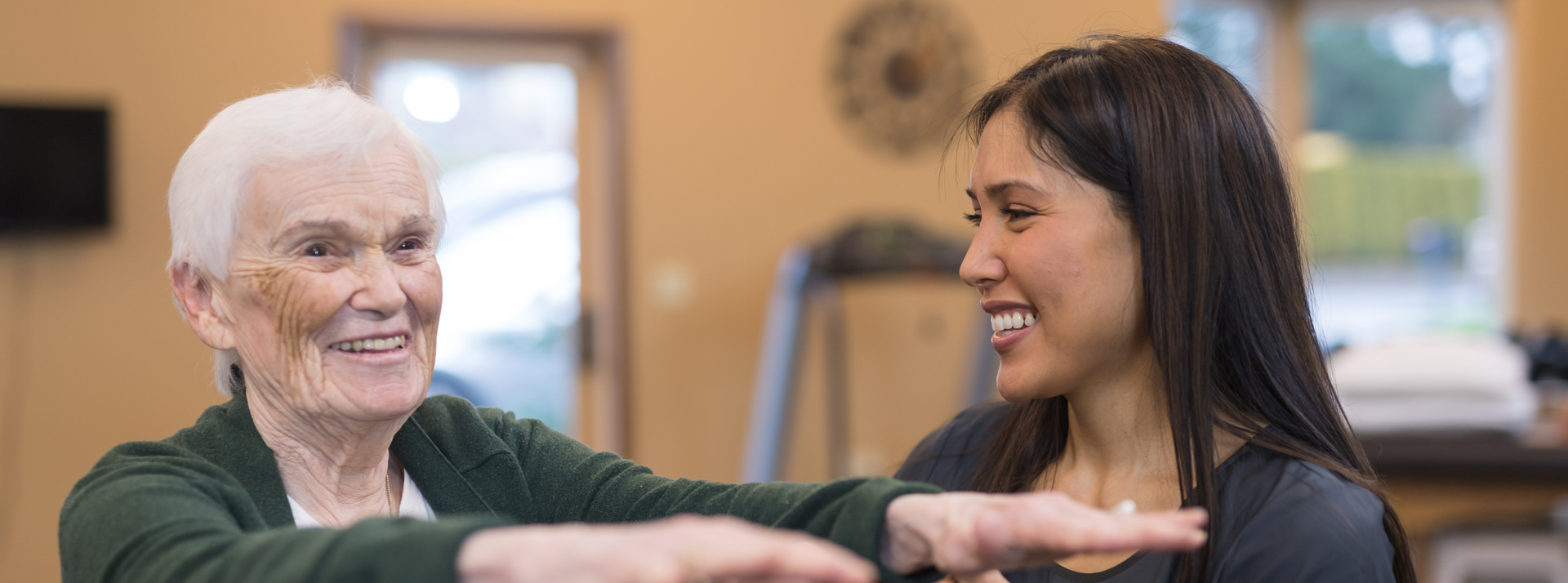General Health - Getting active to help manage weight
Getting active is key to managing weight, and your physio can help.

March 4th marks World Obesity Day 2024, with the global theme "Let's talk about Obesity and...".
Effective, multi-disciplinary health care intervention for the management of obesity continues to be constrained by damaging misconceptions and poor understanding of the complex nature of obesity as a disease. World Obesity Day is an opportunity to emphasise the need for collaboration and collective action to help improve the health of people living with obesity and reduce their risks of further disease.
For more information on World Obesity Day 2024, please visit The Obesity Collective.
The rate of overweight and obese individuals worldwide has grown significantly in the past 50 years, with roughly two thirds of Australian adults currently falling into either of these categories. Worldwide, at least 2.8 million people die each year from being overweight or obese.
Increased body weight and obesity are multifactorial, complex disease processes that occur when an individual has
excessive amounts of fat storage in their body that presents a risk to health.
It is associated with chronic systemic inflammation, due to the immune system activation in the adipose tissue that promotes an increased release of pro-inflammatory cytokines. As the name suggests, these cytokines promote inflammation in the body.
Low-grade inflammation is a characteristic of various chronic diseases such as type II diabetes, cardiovascular disease, and metabolic syndrome. Individuals who are obese have a higher risk of various types of cancer (colorectal, post-menopausal breast, uterine, oesophageal, kidney and pancreatic cancer) and are at a significantly higher risk of having a cardiovascular event (heart attack or stroke). The increased load through the joints may also contribute to higher rates of osteoarthritis and musculoskeletal dysfunction/injuries.
What is a ‘Body Mass Index’?
According to the World Health Organisation (WHO), Body Mass Index (BMI) is a simple index of weight-for-height, commonly used to classify overweight and obesity in adults. It is calculated by dividing a person's weight in kilograms by the square of their height in meters (kg/m2).
For example, a person who is 1.86m tall and weighs 95kg will have a BMI of 95/1.862 = 27.45kg/m2.
For adults, WHO defines overweight as a BMI of greater than or equal to 25, and obesity as a BMI of greater than or equal to 30.
How can I become healthier?
Improving our health often requires making lifestyle changes that can be challenging, even uncomfortable. The first step to making these changes is ensuring you have the right people to support your goals. There is no quick fix to improving your health and losing weight. In fact, you are better off taking a ‘slow and steady’ approach, as research shows this is produces more sustainable lifestyle changes resulting in improved fitness, mood, and quality of life.
If your goal is to lose some weight, take a holistic approach and commit to making small, achievable, sustainable changes to your lifestyle. These changes can focus on:
- Exercise: Getting your heart rate up and sweating a little for just 20mins a day will increase energy expenditure, and improve muscle strength, balance, and cardiovascular fitness.
- Diet: Having the right nutrition levels and reducing your intake of processed sugary foods is a good start. Grab a little extra fruit and veg at the market, experiment with salads at meal times and find some healthy snacks to get you through the day.
- Sleep: Deprivation of sleep is associated with growth hormone deficiency and elevated cortisol levels, which are both linked to weight gain and obesity. How can you change your night-time habits to reduce screen time and sleep better?
- Stress levels: Cortisol, the hormone that is released when we are stressed, is linked with weight gain and obesity. We also tend to eat more (and more ‘sugar high’ foods) when we are stressed. Light exercise such as Tai Chi, Yoga and meditation can help reduce stress, while having some healthy snacks around can help for those high stress moments.
- Sedentary levels: Sedentary habits decrease the amount of energy expenditure for an individual. Getting up and moving more frequently will increase your energy expenditure, and your muscles and joints will love it too.
Each of the changes listed above all play a crucial role improving your overall health, managing the weight, and reducing risk of other illnesses.
Why do we love exercise so much? Click here to see why.
Don’t go it alone.
Breaking old habits can be tough. As already mentioned, having the right support network around you is crucial to succeeding with your own personal health goals. Friends and family can be great. They can also make it more challenging too, particularly if you have a busy lifestyle and are time poor, or their own beliefs and experiences with weight loss clash with yours!
Remember, weight gain occurs for a multitude of reasons – systemic disease, medications, injuries, diet, even where we live.
So, make sure you get professional advice from trusted health care practitioners.
There are many health professionals you can consult depending on which aspects of life you would like assistance in, such as:
- Dietitian: Help with nutritional needs and graduated dietary changes
- Physiotherapist: To assist with pre-existing injuries and pain that might be impacting exercise tolerance, and to prescribe, monitor and progress tailored exercise plans to get you fit and healthy
- Psychologist: Help to manage the stress in your life, provide emotional support in your quest and overcome mental health barriers that might be impacting your weight loss goals
- Doctor: Monitor your general health, treat, and manage other medical conditions, and manage prescription medication.
What exercises should I do?
There are no hard and fast rules when it comes to exercise. Everyone has different interests and goals, meaning the exercise plan should be tailored to each person. In general, it is best to complete some type of exercise every day than nothing at all. There is strong evidence to suggest that a combination of lower-moderate intensity aerobic training, as well as resistance training is effective at reducing body fat stores, building muscle volume and strength, and improving cardiovascular health.
Engagement and enjoyment are key, so these programs are flexible and tailored to the person to be
done at home, in the gym, at the park or in a class setting.
When completing aerobic training, it is helpful to monitor your heart rate to understand what level of intensity you are working at. A simple way to work this out is to calculate your maximum heart rate, which is 220 minus your age, then monitor your heart rate and turn it into a percentage of your maximum heart rate. Aim to work in a heart rate zone of 60-80% of your maximum heart rate to ensure you’re in the right heart rate zone to burn fat and improve aerobic fitness.
For example, a 50-year-old person should aim for a target heart rate during exercise of:
(220 – 50) x 60% to (220 – 50) x 80%
= (170 x 0.6) to (170 x 0.8)
= 102 to 136 bpm
The Take Home
Increased body weight and obesity are complex, multi-factorial disease processes with no quick fix. Undertaking regular, targeted exercise will help you to stay fit and healthy and will contribute to a reduction in body weight and related health risks. A holistic approach will incorporate, at various times, your GP, a dietician, and psychologist to address the many factors that contribute to weight gain and obesity. Physical activity is just one component of a multi-disciplinary approach to weight loss and is an easy place to get started. Walk with your dog, dust off the bike and go for a ride, or just get out and play with the kids or grandchildren - any exercise you can do will be beneficial to you!
Are you overweight or obese and want to improve your health? Give us a call.
At Movement for Life Physiotherapy, we understand physical and exercise therapy for weight loss. We can safely assess your tolerance to physical activity in a controlled environment. With a clear understanding of your physical capacity and a tailored management plan, we'll help get you back to the things you love sooner.
For more information and appointments, please contact us on 08 8945 3799 or book online.
Sources
- Reyes-Romero, M. A., Rodríguez-Hernández, H., Rodríguez-Ramírez, G., & Simental-Mendía, L. E. (2013). Obesity and Inflammation: Epidemiology, Risk Factors, and Markers of Inflammation. International Journal of Endocrinology, 2013, e678159. https://doi.org/10.1155/2013/678159
- Bennie, J. A., Blair, S. N., Brellenthin, A. G., Lee, D., & Sui, X. (2021). Resistance exercise, alone and in combination with aerobic exercise, and obesity in Dallas, Texas, US: A prospective cohort study. PLOS Medicine, 18(6), e1003687. https://doi.org/10.1371/journal.pmed.1003687
- Alam, K., Al-Hanawi, M. K., Biddle, S. J. H., Gow, J., Hashmi, R., Keramat, S. A. (2021). Trends in the prevalence of adult overweight and obesity in Australia, and its association with geographic remoteness. Scientific Reports, 11(1), 11320. https://doi.org/10.1038/s41598-021-90750-1
- World Health Organisation (2021). Obesity and overweight. https://www.who.int/news-room/fact-sheets/detail/obesity-and-overweight. Accessed 20/02/2024.
More articles
Our goal is to enable you to live a pain-free life, with full mobility.
Copyright 2020 Physiotherapy





